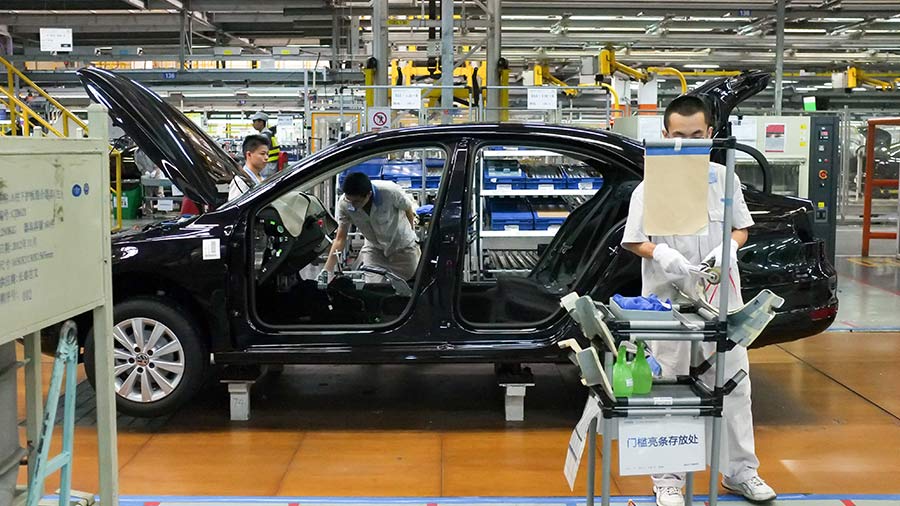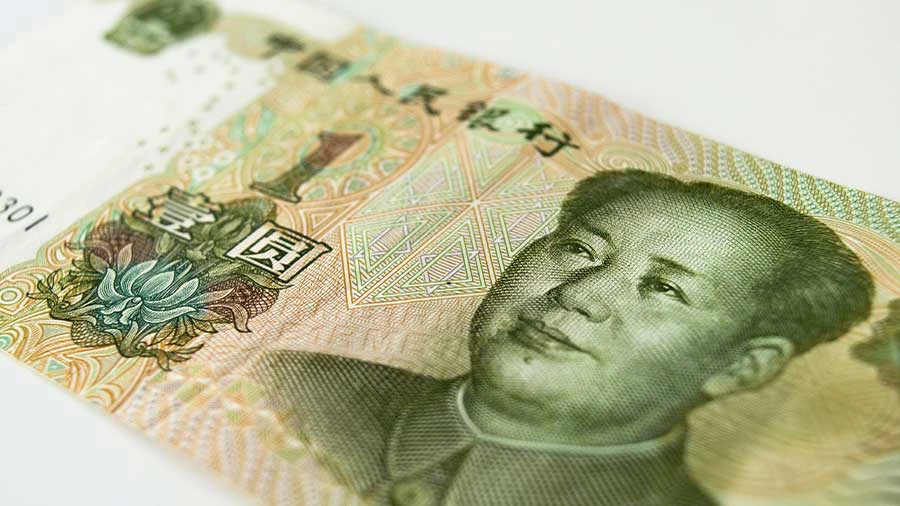China's inland provinces are rapidly becoming the new center of the country's manufacturing industry, evidenced by the growth in exports from central and western provinces. Offering lower production costs while remaining deeply integrated into existing supply chains, these areas offer a compelling alternative to companies seeking to relocate from the more expensive manufacturing hubs in eastern and southern China. We look at the potential advantages of manufacturing in inland China, including costs, resources, and preferential policies.
As costs of production rise steadily in China's eastern regions, more and more companies are considering their reshoring options. This may include the relocation of all production to lower-cost, neighboring countries, often in Southeast Asia, or may involve the relocation of only part of the production process, as part of a so-called “China+” strategy.
However, many companies are also choosing to remain within the country and instead relocating their factories to lower-cost locations in China's growing central and western provinces.
This shift in manufacturing locations is driven by a combination of factors, including lower production costs, improved manufacturing capacity, and better integration with supply chains when compared to offshore alternatives. Additionally, years of government policies and incentives, as well as the availability of renewable energy resources, are making inland China an increasingly attractive destination for businesses seeking to optimize their production processes.
Growth in exports in central and western regions
Manufacturing in inland China, specifically the western and central provinces, has improved considerably over the last decades, as evidenced by the growth in the region's exports.Between 2014 and 2022, the total annual exports of China’s western provinces (Chongqing, Gansu, Guangxi, Guizhou, Inner Mongolia, Ningxia, Qinghai, Shaanxi, Sichuan, Tibet, Xinjiang, and Yunnan) grew from RMB 1.34 trillion (US$217.5 billion) to RMB 2.34 trillion (US$319.8 billion), a CAGR of 7.25 percent.
The central regions, though making up fewer provinces overall (Anhui, Henan, Hubei, Hunan, Jiangxi, and Shanxi), have grown even faster, increasing from RMB 974.2 billion in 2014 to RMB 2.57 trillion in 2022. All six central provinces recorded a CAGR of over 10 percent between 2014 and 2022, with Hunan’s exports growing at a CAGR of 19.6 percent.The western provinces with the highest growth in exports include Shaanxi, Guangxi, and Sichuan, which grew at a CAGR of 17 percent, 11.8 percent, and 10.7 percent respectively between 2014 and 2022.
The composition of the exports of central and western provinces also points to an increase in manufacturing, in particular of labor-intensive goods. Data show that in 2022, China’s central, western, and northeastern regions accounted for 29.4 percent of the country's total processing trade, an increase of 7.4 percentage points from 2017.
Another indication of the growth of manufacturing in inland China is changes in the country's internal migration patterns. While past decades saw a huge exodus of workers from central and western regions to the eastern manufacturing powerhouses, this phenomenon has gradually reversed.
The latest data from China’s National Bureau of Statistics (NBS) on the movement of migrant workers (generally, people who leave rural areas to find work in urban areas), suggests that people are increasingly looking for work nearer to home.
Of the 295.62 million migrant workers recorded in 2022, 58.9 percent chose to stay within their own province, a slight increase from 2021, while 41.1 percent traveled outside their province to find work. Moreover, the number of migrant workers traveling to the central and western regions has increased faster than the number traveling to the east. In 2022, the number of migrant workers employed in the eastern provinces increased by just 0.1 percent year-on-year, while the number employed in the central provinces increased by 3 percent year-on-year. In western provinces, the number increased by 2.5 percent year-on-year.
Factors such as rising living costs and changing work preferences are key to understanding the shifts, as are the availability of quality jobs.
Inland China’s pull factors for foreign companies
China’s inland regions offer a range of benefits that are attractive to foreign companies seeking lower-cost alternatives to the traditional manufacturing hubs on the coast. These factors differ depending on the industry sector. While labor-intensive and cost-sensitive sectors may primarily be attracted by lower wages and cheaper floorspace, energy-intensive sectors are also considering the availability of cheaper energy sources, in particular renewables.Minimum wages in China have risen considerably over the past few decades, with the coastal cities seeing the highest minimums in the country. At the time of writing in 2023, all provinces and municipalities with a regional minimum wage of RMB 2,200 (US$300.65) or above were in eastern China. The province with the lowest monthly minimum wage in 2023 was Gansu, at RMB 1,820 (US$248.72) per month.
Meanwhile, salaries in the private sector have increased from an average of RMB 32,706 (US$5,318) per year in 2013 to RMB 65,237 (US$8,915) per year in 2022. Average annual salaries differ considerably across the country, however, with a large gap between the richer eastern provinces and the central and western provinces. While the average annual private sector salary in Guangdong province in 2022 was RMB 77,657 (US$10,613), in Henan it was just RMB 47,918 (US$6,548.5), while in Guangxi it was RMB 49,951 (US$6,826).China’s changing internal migration patterns and shifting demographics may also serve to accelerate the rise in wages in eastern provinces. A combination of low birth rates and an aging population with less internal migration is likely to exacerbate labor shortages in more expensive eastern provinces, further driving upward pressure on wages.
Another factor driving up the cost of manufacturing in China is the rising prices of industrial land. Although the cost of land for industrial use remains considerably lower than land for residential use, prices in eastern coastal cities have nonetheless become more unaffordable, in particular for smaller and cost-sensitive businesses.
Coastal cities such as Ningbo, Zhejiang, and Shanghai have some of the highest cost per square meter of industrial land in the country, whereas even larger cities inland are considerably cheaper. As of September 2021, the latest data available, the average cost of industrial land in Shanghai was RMB 1,975 (US$269.9) per square meter, and Ningbo was RMB 1,287 (US$175.9) per square meter.In Nanchang, the provincial capital of Jiangxi, the price was RMB 405 (US$55.4) per square meter, while in Chongqing municipality it was RMB 480 (US$65.6) per square meter.
For energy-intensive manufacturing, a major draw to China’s inland provinces is the availability and proximity of cheaper energy resources, and in particular renewables.
The remote and sparsely-populated western provinces, in particular, have ample access to land and renewables in the form of wind, solar, and hydroelectric power.
It is also worth noting that the overwhelming strength of China’s supply chains also plays a part in the attractiveness of inland provinces over neighboring countries when it comes to the question of reshoring.
Although moving manufacturing to inland China adds to the time and cost of shipping, these provinces are also much closer to the source of raw materials and are more deeply integrated into existing supply chains, compared to industries in Southeast Asia and other reshoring destinations.
Policies for industrial transfer to central and western China
The policy to transfer manufacturing and industry from east to west goes back to at least 2010 when the State Council released a set of opinions on the undertaking of “industrial transfer” in central and western regions. These opinions also mention the strategy of “gradient transfer” (梯度转移), specifically in the field of the development of processing trade.In early 2022, a group of government departments issued a set of opinions on “promoting the orderly transfer of manufacturing industries”, proposing measures for ensuring central, western, and northeastern provinces have the capability to undertake this transfer. These opinions particularly promote the shift of labor-intensive industries to "areas with abundant labor and convenient transportation in the central and western regions”. Moreover, they seek to promote the transfer of technology-intensive industries to areas “rich in innovation factors and solid industrial foundations” in central, western, and northeastern regions.
Encouraging foreign investment in inland China
Over the years, the government has issued several policy documents and implemented various incentive programs to attract foreign investment in inland China. A 2017 Circular outlining several measures to expand foreign investment called for, among other proposals, supporting the “central, western, and northeastern regions to undertake the transfer of foreign-invested industries”.The measures proposed in the Circular include providing FIEs relocating to central, western, and northeastern China with preferential capital and land policies, as well as other state support for industrial transfer and processing trade.
Since 2001, China’s tax authorities have also provided a reduced 15 percent corporate income tax (CIT) rate for companies operating in certain eligible industries in western provinces. This policy, which has been extended twice in 2010 and 2020, applies to both foreign and domestic companies working in certain encouraged industries in the western provinces, as well as certain areas of central and northeastern provinces (Xiangxi Tujia and Miao Autonomous Prefectures in Hunan, Enshi Tujia and Miao Autonomous Prefectures in Hubei, Yanbian Korean Autonomous Prefecture in Jilin, and Ganzhou City in Jiangxi).
The eligible industries are different for foreign and domestic companies. Key points to note are:
- For foreign companies, they include all industry sectors listed in the Catalog of Encouraged Industries for Foreign Investment (2022 Edition), while for domestic companies, they include the encouraged sectors listed in the Guiding Catalog for Industrial Structure Adjustment (2021 Edition) and the Catalog of Encouraged Industries in Western Regions (2020 Edition). Industry sectors in the latter catalog differ from province to province and are updated periodically, but generally include high-end technology sectors, manufacturing, pharmaceuticals, and international trade.
- While the reduced 15 percent CIT rate is also available in other areas of China, its implementation in western provinces is notable as it is applicable to companies operating in any area of a province, and is not limited to certain development and industrial zones as is the case in eastern China.
- This policy is currently in place until the end of 2030.
Improving infrastructure and resource provision in inland China
Working in tandem with the above policies are efforts to upgrade the region's infrastructure and technological capabilities, thereby making it a more attractive destination for foreign investment.In recent years, China’s central and regional governments have proposed development projects and released policy documents, seeking to leverage existing advantages in the western and central provinces to build up local capacity and infrastructure for production industries.
For example, the “West-East natural gas transmission project”, “West-East electricity transmission project”, and more recently, the “Eastern Data, Western Computing” project. The data project will see the construction of multiple “computing hubs” in China’s western and central regions, which will process and store the massive amounts of data produced by industries in eastern China. It is hoped that this will increase the demand for computing services in western China while simultaneously reducing the pressure on data centers in the coastal provinces.
China’s western provinces have also been actively establishing new development and industrial zones, thereby enabling them to host the influx of production companies. Since 2019, free trade zones (FTZs) have been established in the provinces of Yunnan, Guangxi, Shaanxi, Hunan, Guangxi, Anhui, Henan, and Hubei. In October 2023, the State Council also approved the establishment of an FTZ in Xinjiang.
The Chengdu-Chongqing Twin City Circle, itself an ambitious development project inaugurated in 2021, aims to develop various manufacturing sectors, including the production of advanced materials, automobile and motorcycle accessories, equipment, energy, and chemicals, among other sectors.
China has also been tapping into the immense energy potential of the West with the construction of several major renewable energy projects. For instance, in 2022, China launched a plan to build 455 GW of solar and wind energy capacity in the country’s vast desert regions (broadly, covering the western provinces of Inner Mongolia, Gansu, and Xinjiang), aiming to install 200 GW of capacity by 2025 and an additional 255 GW by 2030—60 percent solar and 40 percent wind. In the future, this could present a significant advantage for energy-intensive industries seeking a greener and lower-cost energy source.
At the beginning of October 2023, the State Council issued a set of opinions promoting the development of Inner Mongolia, which the opinions describe as “an important national energy and strategic resource base”. On industry transfer, the opinions encourage local consumption of new energy and support “the transfer of advanced green and high-energy industries to low-carbon and zero-carbon parks in Inner Mongolia”.
Considerations for foreign companies
Deciding on whether to move manufacturing to inland China will largely depend on the underlying reason for moving production out of eastern China. For companies operating in labor-intensive industries and cost-sensitive industries, the ideal location for a new factory may be a lower-tier urban area in central China or the nearer western provinces. Meanwhile, a company engaged in energy-intensive production may seek a lower-density area with better natural resources. In addition, considerations may also be given to factors such as the industry sector and the technological capabilities, infrastructure, and talent pools available in individual cities, industrial parks, and development zones.The decision to move production to inland China will require in-depth research into the advantages and disadvantages of various locations. Considerations will include a vast range of factors, including the availability of land, labor, raw materials, and other resources, regional operating costs, local support policies, and much more.
Location analysis becomes even more complex when looking at multiple countries as possible destinations, as knowledge of local industry regulations and other compliance considerations will be required in addition to an understanding of the local operating conditions.
Our advisors at Dezan Shira & Associates can provide location and site analysis, cross-country competitiveness benchmarking, and supply chain reengineering solutions to help businesses make intelligent decisions on where to relocate their investments. For more information, please contact china@dezshira.com.








